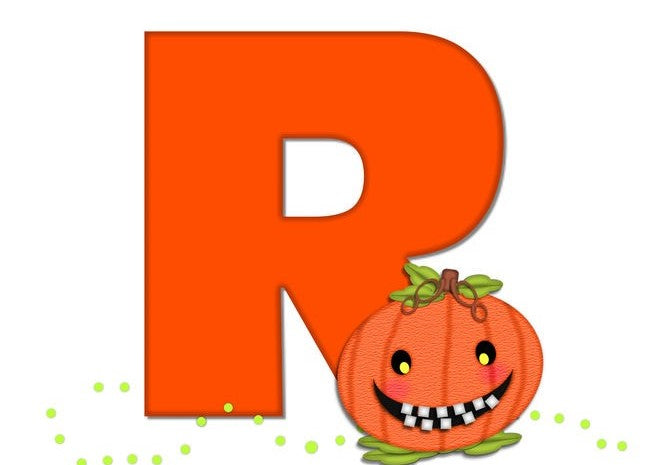
“Just tell me a few bottom-line things I need to know about ‘r’ so I can remediate my seven /r/ kids!”
A fellow SLP earnestly asked me this during our 15-minute seminar break with 3-minutes left. Well, here ya go—this is the shortest version I can come up with and (hopefully) it still makes sense!
Speech in general is complex, but /r/ is super complex all by itself. Therapy for /r/ is way beyond just “speech-sound placement.” When you delve into and beyond some of the typically held beliefs and techniques, you'll find the following insights about the /r/ production.
The /r/ requires physiological layering, i.e. the tongue executes several complex maneuvers (almost) at once. To produce a back-up /r/ the tongue must (almost) simultaneously:
-
Contract/tighten (and maintain throughout the production)
-
Retract
-
Elevate the back-tongue
-
Make its way to the retromolar pads (back-tongue corners stabilize behind top, back teeth), and
-
Anchor and hold that contracted-retracted-elevated position, and phonate while air resonates within the pharyngeal cavity.
Some kids will (miraculously and thankfully) get it when you show and tell them the components and steps. A few get it immediately and some personally work on it and figure it out. Love those motivated kids!
Others need the full component breakdown. Here’s the breakdown-in-brief for the back-up /r/.
Retromolar Placement (Lingual Stabilization):
-
Need a dental floss handle (Amazon.com; Flossaid Dental Floss Holder, for example; always use the pronged ones).
-
With the prongs, palpate the back-tongue “corners” (back where you also stabilize for a /k/), then palpate up behind the back teeth;match. Ask him/her to close eyes, focus and feel, and match. The back-tongue elevates and the tongue “corners” contact top-sides in back.
-
Do at least 5-10 times each time you see the child.
-
THEY MUST LEARN TO EASILY, QUICKLY, AND CONSISTENTLY FIND THIS PLACEMENT.
Lingual Tension: Tell the child their tongue must be tight when saying a good /r/.
A tight tongue = a good /r/.
-
Ask/show/describe a tight narrow tongue.
-
Do alternate “tighten” then “loosen.” Train proprioceptive discernment of what each one feels like.
-
Do repeatedly, over time; establish the capability to do this. If they can’t discern tight, they won’t tighten it (and maintain it) when it’s retracted and elevated.
Retraction:
-
Find the back-tongue muscles to retract the tongue (no curling the front).
-
Stick the tongue out, retract the tongue in with the “pulling-back muscles.” Once they get the hang of it; close eyes and train proprioceptively (internal awareness). Put fingers on throat to feel the movement (external awareness).
First Layer: Tension + Retraction:
When ready, add a layer; tighten the tongueand retract it simultaneously. Do slowly at first. Access pulling-back tongue muscles while maintaining lingual tension. Do controlled, out-ins with lingual tension.
Elevation:
-
If the child can lift and lower their back-tongue, you’re set. If not, they must generate the capability (and awareness) to do so. Place a Toothette on the back-tongue, bite on the stick, and squeeze the back-tongue up (and down). (There are other options, but thisis the condensed version.) Do many times, at capability, over a matter of weeks (if needed) to generate awareness, deliberateness, and consistency.
-
If they can’t elevate the back-tongue, they can’t get an /r/. (If you’re looking at the retroflex /r/ option, you’re in trouble here, too. The back-tongue must also elevate and stabilize for a retroflex /r/, as well as curl/retroflex.
-
If they can’t elevate the back-tongue, you’ll have to address that first.
Second Layer: Tension + Retraction + Elevation and Stabilization
-
Tighten your tongue, pull it back and up (diagonally); anchor on the pads—and HOLD.
-
A narrow tight tongue when retracted to the back and up will get bunchy.
-
Do it a gazillion times. Nail down the proprioceptive movement pattern.
Third Layer: Tension + Retraction + Elevation/Stabilization + /ng/ (then /r/)
-
Tighten your tongue, pull it back and up (diagonally); anchor on the pads, hold, and say /ng/ repeatedly. (The /ng/ requires the back-corners to stay anchored and the mid-back-tongue to move up and down—with itty-bitty movements.)
-
Do the little-bitty /ng/s many, many times.
-
Then add /r/ to the sequence: “Tighten your tongue, pull it back, lift it up, hit the pads, (keep it tight), say /ng/,then /r/.” It’s similar, butthe pharyngeal resonance and phonation of the sound issustained. Fade the /ng/ once they get the /r/.
-
Encourage them to not go back to their previous r-sound attempts. Say, “Don’t TRY to say /r/--just focus on your tongue and we’ll love whatever sound comes out.” “Do a NEW sound.”
-
Keep eyes closed; keep their focus on their tongue—NOT the sound of the sound.
A few phrases to say to your r-kids:
-
Close your eyes; send a spy down to your tongue.
-
Close your eyes; focus and feel.
-
Tighten your tongue, pull it back, lift it up (angle it) and hit the pads. Keep the tension and say /r/. “Tight” means medium-tight—not killer tight.
-
Keep your lips relaxed and out of it—all the action happens in the back.
-
Keep lips out of it and relaxed. We need them for the “b” sound but not the “r” sound. (SLP: You can add some lip rounding later for emphasis.)
-
Keep most of the air in the back (in your throat area). Let it bounce around back there for a second; it’ll find its way out without you doing anything.
-
Don’t focus on the sound—focus on what you are doing with your tongue. The sound will take care of itself.
-
It may feel weird at first—that’s okay. Everything new feels different for a short while.
-
Be willing to try something new; be brave. Walk into the fear; I’m here for you.
If you want a more comprehensive version, there are several Therapy Matters blogs that focus on /r/ (#2, #3, #4, #18), as well as an Article on /r/ remediation, and a couple informative books: The Easy R (a paperback book + electronic appendix) provides 12 Lessons that can be modified and personalized, if needed. It’s detailed, gives you the sequence, as well as solidification and carryover info and tasks. The ebook, How to Remediate R, is condensed and informative, minus the lesson sequence.
You can do it! Have a great week!
Char Boshart
Comments (2 Responses)
Susan Buchen
Sooooo helpful! Thanks tons.
Leave a comment (all fields required)
Comments will be approved before showing up.

![#71 Telepractice Tips 'n Info (Part 4) [Is my child working or just playing games?]](http://speechdynamics.com/cdn/shop/articles/Game_Pieces_and_Hand_7_x_3_2048x.jpg?v=1605804364)

13 September, 2020
Char Boshart
Great! Thank you, Susan! I appreciate your kind response.